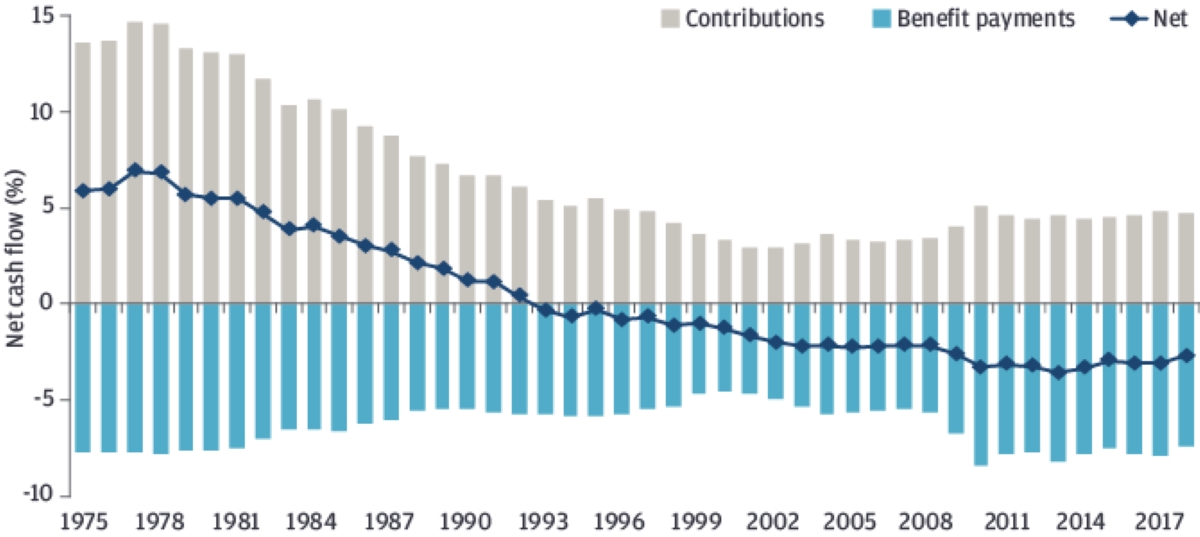

Finance
How To Get Seed Funding
Modified: January 17, 2024
Learn the strategies and tips to secure seed funding for your startup. Discover how finance can help kickstart your entrepreneurial journey.
(Many of the links in this article redirect to a specific reviewed product. Your purchase of these products through affiliate links helps to generate commission for LiveWell, at no extra cost. Learn more)
Table of Contents
Introduction
Welcome to the world of entrepreneurship and innovation! If you have a groundbreaking idea for a business but lack the necessary funds to bring it to life, then you’re in the right place. Seed funding can be the catalyst that turns your vision into a reality.
So, what exactly is seed funding? In the business world, seed funding refers to the investment capital that is provided to early-stage startups or entrepreneurs to help them get their ideas off the ground. This initial infusion of funds is crucial for covering expenses such as product development, market research, and hiring key team members.
Seed funding plays an integral role in the startup ecosystem by providing the necessary fuel for innovative ventures to take flight. It allows entrepreneurs to transform their ideas into viable products or services, attracting further investment and scaling up their businesses.
Securing seed funding is an important step for any aspiring entrepreneur. Not only does it provide financial support, but it also validates your business idea and demonstrates that others believe in its potential. Investors who commit seed capital are essentially betting on your success, and their confidence in your venture can help attract additional funding down the road.
However, obtaining seed funding is not a walk in the park. It requires careful planning, meticulous preparation, and effective communication. In this comprehensive guide, we will walk you through the process of obtaining seed funding for your startup, providing you with valuable insights and practical tips to navigate this exciting journey.
Whether you’re a first-time entrepreneur or a seasoned business owner looking to launch a new venture, this guide will equip you with the knowledge and tools to succeed in the competitive realm of seed funding. So, let’s dive in and discover how to turn your entrepreneurial dreams into reality!
What is Seed Funding?
Seed funding, also known as seed capital or seed investment, is the initial round of financing that a startup or entrepreneur receives to launch their business venture. It is typically obtained in the early stages of development when the business is still in its infancy.
Seed funding is provided by angel investors, venture capitalists, or even friends and family who believe in the potential of the business idea. The purpose of this funding is to help the startup cover essential expenses such as product development, hiring a team, market research, and initial marketing efforts.
Unlike other types of funding, such as series funding or debt financing, seed funding does not require startups to have a proven track record or extensive financial history. Instead, it is focused on the potential of the business idea and the team’s ability to execute it successfully.
Seed funding can range from a few thousand dollars to several million, depending on the industry, market potential, and scalability of the startup. While the funding amount may seem relatively small compared to later-stage investments, seed funding plays a crucial role in helping startups lay the foundation for growth and attract further funding in the future.
In addition to providing financial support, seed funding also offers other benefits. It often comes with mentorship and guidance from experienced investors who can provide valuable industry knowledge, connections, and strategic advice. This support can be instrumental in steering the startup in the right direction and increasing its chances of success.
Seed funding is typically obtained through a formal pitch or presentation to potential investors. Entrepreneurs need to showcase their business idea, explain its unique value proposition, and outline the potential for growth and profitability. Investors evaluate the startup’s potential and make a decision based on their assessment of the market, the team, and the overall viability of the business concept.
Overall, seed funding is an essential component in the early stages of a startup’s journey. It provides the initial resources necessary to turn an idea into a tangible product or service and sets the stage for future growth and expansion. In the next section, we’ll explore the importance of seed funding and why it is crucial for entrepreneurs to secure this initial investment.
The Importance of Seed Funding
Seed funding plays a pivotal role in the success of a startup. It provides the financial support necessary to bring an innovative idea to fruition and lay the groundwork for future growth. Let’s explore why seed funding is so crucial for entrepreneurs:
1. Turning Ideas into Reality: Seed funding allows entrepreneurs to transform their ideas into tangible products or services. It provides the necessary resources to conduct research, develop prototypes, and build a solid foundation. Without seed funding, many groundbreaking ideas would remain just that – ideas.
2. Validating the Business Idea: When investors commit seed capital to a startup, it validates the business concept. It shows that there is market potential and that others believe in the viability of the idea. This validation not only boosts the confidence of the entrepreneur but also attracts further investors and stakeholders.
3. Attracting Key Talent: A startup’s success often hinges on its team and their ability to execute the business plan. Seed funding provides the financial means to hire key team members, such as developers, designers, and marketers. With access to talented individuals, startups can build a strong foundation and scale their operations effectively.
4. Early Market Penetration: With seed funding, startups can engage in marketing and promotional activities to create brand awareness and gain a foothold in the market. This early market penetration is crucial for startups to acquire customers, generate revenue, and establish a competitive edge.
5. Iteration and Improvement: Seed funding provides the flexibility for startups to iterate and refine their product or service based on user feedback and market demands. It allows for continuous improvement and adaptation, increasing the chances of long-term success.
6. Nurturing Relationships with Investors: Seed funding is often the first interaction between entrepreneurs and investors. It offers the opportunity to build relationships, gain mentorship, and tap into the expertise of experienced investors. These connections can be invaluable in terms of industry insights, strategic guidance, and future funding opportunities.
7. Scaling and Expansion: Seed funding enables startups to scale their operations, enter new markets, and expand their customer base. It provides the financial resources needed to invest in infrastructure, marketing campaigns, and talent acquisition to propel growth and unlock future funding rounds.
In summary, seed funding is not just about the money. It represents a crucial stepping stone for startups, providing the initial resources, validation, and support necessary to turn an idea into a successful business. It is an opportunity to build a solid foundation, attract key talent, penetrate the market, and set the stage for future growth and success.
Preparing for Seed Funding
Securing seed funding for your startup requires careful preparation and planning. Before approaching potential investors, it’s crucial to ensure that you have a solid foundation in place. Here are some key steps to take when preparing for seed funding:
1. Define Your Business Model: Clearly articulate your business model, including your target market, value proposition, revenue streams, and competitive advantage. Investors need to understand how your startup will generate revenue and sustain growth.
2. Conduct Market Research: Thoroughly analyze your target market, identify customer needs, and understand the competitive landscape. Investors want to see that you have a deep understanding of the market and have positioned your product or service to address a genuine market need.
3. Build a Prototype: Develop a functional prototype of your product or a minimum viable product (MVP). Having a tangible demonstration of your idea is essential in gaining investor confidence and showcasing the potential of your offering.
4. Form a Skilled Team: Investors are not just investing in your idea; they are also investing in the team behind it. Build a diverse and complementary team of individuals with relevant experience and expertise. Highlight the strengths of your core team members and their ability to execute the business plan.
5. Create a Comprehensive Business Plan: Develop a detailed business plan that outlines your vision, market analysis, revenue projections, and growth strategy. Investors want to see that you have a clear roadmap for success and have thought through potential challenges and opportunities.
6. Set Realistic Financial Projections: Prepare financial projections that are grounded in realistic assumptions and demonstrate a clear path to profitability. Investors want to see that you have a solid grasp of your financials and have a plan for achieving a return on their investment.
7. Strengthen Your Network: Cultivate relationships within the startup and investment community. Attend industry events, join entrepreneurial organizations, and reach out to potential mentors or advisors. A strong network can provide valuable guidance, connections, and credibility when approaching investors.
8. Prepare Pitch Materials: Create a compelling pitch deck and executive summary that effectively communicates your business idea, market opportunity, competitive advantage, and financial projections. Tailor your pitch materials to each investor and highlight the aspects that align with their investment preferences.
9. Practice Your Pitch: Rehearse and refine your pitch to confidently convey your vision, passion, and expertise. Prepare for potential questions or objections and be ready to provide concise and convincing answers. Practice with friends, mentors, or other entrepreneurs to gain feedback and improve your presentation.
10. Develop a Robust Legal and Governance Framework: Ensure that you have the necessary legal documentation in place, such as incorporation documents, intellectual property agreements, and shareholder agreements. Investors want to see that you have a solid foundation and have considered the legal aspects of your startup.
By taking these essential preparatory steps, you will be well-equipped to approach potential investors and make a compelling case for seed funding. Remember, thorough preparation increases your chances of securing investment and sets the stage for a successful partnership with investors.
Developing a Solid Business Plan
A well-crafted and comprehensive business plan is a vital component when seeking seed funding for your startup. It provides potential investors with a clear understanding of your vision, strategy, and financial projections. Here are the key elements to consider when developing a solid business plan:
1. Executive Summary: Start your business plan with a concise and compelling executive summary. This section should provide an overview of your business, highlighting the market opportunity, your unique value proposition, and the potential for growth and profitability. Grab the reader’s attention and entice them to learn more.
2. Company Overview: Provide detailed information about your company, including its history, legal structure, location, and management team. Describe the mission and vision of your startup and how it aligns with the market need you are addressing.
3. Market Analysis: Conduct thorough market research to understand the size, trends, and customer segments of your target market. Identify your ideal customer profile, their needs, and pain points. Analyze your competition and demonstrate how your product or service offers a distinct advantage.
4. Product or Service Offering: Clearly describe your product or service, its features, benefits, and how it solves a problem for your target market. Outline your development roadmap, highlighting any milestones achieved or future plans for innovation and improvement.
5. Marketing and Sales Strategy: Present your marketing and sales plan, detailing how you will attract and acquire customers. Define your target audience, outline your pricing strategy, and describe your distribution channels. Clearly articulate your sales tactics and promotional activities.
6. Operations and Management: Outline your operational structure, including your facilities, production processes, and supply chain. Highlight the expertise of your management team, their roles, and responsibilities. Showcase the depth of knowledge and experience you have in your industry.
7. Financial Projections: Develop comprehensive financial projections that include your revenue forecast, expenses, and cash flow projections over a three to five-year period. Provide detailed assumptions behind your projections and demonstrate how you will achieve profitability. Highlight any existing revenue streams or potential partnerships that will contribute to your financial success.
8. Funding Requirements: Clearly state the amount of seed funding you are seeking and how you will allocate the funds. Break down the expenses and investments needed for product development, marketing, hiring, and operations. Explain how the investment will be used to propel your startup forward.
9. Risk Analysis: Assess the potential risks and challenges that your startup may face and outline strategies for mitigating these risks. Investors want to see that you have considered the potential obstacles and have contingency plans in place.
10. Appendix: Include any supporting documentation such as market research, patents, contracts, or key partnerships in the appendix. This section should provide additional information that strengthens the credibility and feasibility of your business plan.
Developing a solid business plan demonstrates your commitment, strategic thinking, and ability to execute your vision. It provides investors with the insights they need to evaluate the potential of your startup and determine whether to invest. Remember, a well-structured and compelling business plan is a valuable tool in securing seed funding for your entrepreneurial journey.
Building a Prototype
Building a prototype is a crucial step in the development of your startup as it allows you to transform your ideas into a tangible product or service. A prototype not only demonstrates the feasibility of your concept but also serves as a tool to showcase the potential value to potential investors. Here’s what you need to consider when building a prototype:
1. Define the Purpose: Clearly define the purpose of your prototype. Is it to test the functionality of your product, gather user feedback, or demonstrate your idea to potential investors? Understanding the purpose will help you focus on the essential features and functionality of your prototype.
2. Determine the Level of Fidelity: Consider the level of fidelity you want to achieve with your prototype. Low-fidelity prototypes can be simple sketches or wireframes, while high-fidelity prototypes closely resemble the final product. The level of fidelity depends on your budget, time constraints, and the purpose of the prototype.
3. Choose the Right Tools: Depending on your product or service, choose the appropriate tools to build your prototype. It could be as simple as pen and paper for sketches or wireframing software for digital prototypes. Utilize tools like 3D printers or CAD software for more complex physical prototypes.
4. Focus on Core Features: Identify the core features that best represent the unique value proposition of your product or service. Prioritize these features in your prototype to demonstrate its viability and functionality. It’s important to strike a balance between showcasing the key features and avoiding unnecessary complexity or distractions.
5. Test and Iterate: Use your prototype to gather valuable feedback from potential users or stakeholders. Conduct usability tests, focus groups, or interviews to gather insights and identify areas for improvement. Iterate on your prototype based on user feedback to refine and enhance its functionality and user experience.
6. Validate the Market Need: A prototype can help validate the market need for your product or service. Use it to showcase your solution to potential customers and gather feedback on their interest, pain points, and willingness to pay. This validation will provide valuable insights when pitching to investors and scaling your business.
7. Showcase to Potential Investors: A well-developed prototype can be a compelling asset when pitching to potential investors. It demonstrates that you have taken the necessary steps to develop your idea and gives investors a concrete vision of what your product or service can achieve. Use your prototype to communicate the value proposition and differentiation that sets your startup apart.
8. Consider Cost and Scalability: When building your prototype, balance the cost of development with the scalability of your product or service. Avoid excessive expenditures on a prototype that may require significant design changes in the future. Focus on building a prototype that showcases the core functionality while keeping an eye on future scalability.
9. Build a Minimum Viable Product (MVP): In some cases, your prototype can serve as the foundation for your minimum viable product (MVP). An MVP is an early version of your product or service that includes only the core features necessary to deliver value to customers. Building an MVP allows you to gather real-world feedback and validate your assumptions before scaling up.
10. Iterate and Improve: Building a prototype is not a one-time task. Use the insights and feedback gathered from testing and showcasing your prototype to iterate and improve your product or service. Continuously refine and enhance your prototype as you progress on your entrepreneurial journey.
Building a prototype is an essential step in the startup journey. It allows you to visualize your ideas, gather feedback, validate your market assumptions, and pitch to potential investors. By approaching the process strategically and iteratively, you can develop a prototype that meets both your vision and the needs of your target audience.
Identifying Potential Investors
Identifying and connecting with potential investors is a crucial step in securing seed funding for your startup. Finding the right investors who align with your business vision, industry, and growth plans can significantly increase your chances of securing the necessary funding. Here are some strategies to help you identify potential investors:
1. Research Venture Capital Firms: Conduct in-depth research on venture capital firms that specialize in your industry or have a track record of investing in startups similar to yours. Look for firms that have a history of seed funding and a clear focus on early-stage startups.
2. Utilize Online Platforms: Leverage online platforms that connect entrepreneurs with potential investors. Explore platforms such as AngelList, Crunchbase, Gust, and PitchBook to identify investors actively looking for seed funding opportunities.
3. Attend Startup Events and Pitch Competitions: Participate in startup events and pitch competitions in your industry or geographic area. These events attract investors who are interested in discovering innovative ideas and promising startups. Take advantage of networking opportunities and make connections with potential investors.
4. Seek Recommendations: Tap into your network of mentors, industry contacts, and fellow entrepreneurs for recommendations. They may be able to introduce you to potential investors or direct you to relevant investment networks or angel groups that focus on seed funding.
5. Engage with Startup Incubators and Accelerators: Join startup incubators or accelerators that provide resources, mentorship, and access to investor networks. These programs often culminate in demo days or investor pitch events, which give startups the opportunity to showcase their ideas and attract potential investors.
6. Look for Industry-Specific Funds: Explore the possibility of approaching industry-specific funds or corporate venture arms that have a strategic interest in your industry. These investors may have a deeper understanding of your market and can provide valuable industry expertise and connections.
7. Leverage Alumni Networks: Utilize alumni networks from your university or previous work experience. Tap into the alumni community for potential investors who may have a shared affiliation or interest in supporting entrepreneurs from their alma mater or previous organization.
8. Attend Investor Conferences and Pitch Events: Attend investor conferences and pitch events that cater to early-stage startups. These events bring together investors actively seeking investment opportunities. Prepare a compelling pitch and engage in networking to attract potential investors.
9. Connect with Business Angels: Engage with business angels or high-net-worth individuals who are interested in seed-stage investment. These individuals often invest their personal funds in startups and can provide valuable mentorship and industry connections along with financial support.
10. Conduct Due Diligence: Before approaching potential investors, conduct thorough due diligence to ensure they are a good fit for your startup. Research their investment portfolio, investment criteria, and track record. Evaluate whether their investment philosophy aligns with your long-term goals.
Remember, identifying potential investors is not just about finding anyone willing to invest; it’s about finding the right investors who share your vision and can offer strategic value along with financial support. By utilizing these strategies and conducting careful research, you can identify and connect with potential investors who are a great fit for your startup.
Crafting an Effective Pitch
Crafting an effective pitch is essential when seeking seed funding for your startup. It’s your opportunity to capture the attention of potential investors and convince them to invest in your business. Here are key elements to consider when crafting your pitch:
1. Start with a Compelling Hook: Begin your pitch with a compelling and attention-grabbing hook that piques the interest of investors. This could be a surprising statistic, a thought-provoking question, or a powerful statement that immediately conveys the value and significance of your startup.
2. Clearly Articulate the Problem: Clearly define the problem or pain point that your product or service aims to solve. Investors need to understand the market need and the significance of the problem you’re addressing. Paint a vivid picture of the pain points and challenges faced by your target customers.
3. Present Your Unique Value Proposition: Clearly communicate your unique value proposition and how your solution sets you apart from competitors. Highlight the key features, benefits, and advantages of your product or service. Clearly articulate what makes your startup unique and why it is poised for success.
4. Demonstrate Market Opportunity: Showcase the size and potential of your target market. Provide compelling data and market research to support the demand for your product or service. Investors need to see the growth potential and scalability of your startup in a sizable and accessible market.
5. Showcase Traction and Milestones: Highlight any significant milestones or traction your startup has achieved. This could include customer acquisitions, partnerships formed, patents filed, or revenue generated. Demonstrating progress and momentum adds credibility and confidence in your ability to execute your business plan.
6. Present a Clear Revenue Model: Clearly articulate your revenue model and how your startup plans to monetize its product or service. Explain your pricing strategy, sales channels, and projected revenue streams. Investors need to see a clear path to profitability and understand the potential return on their investment.
7. Showcase Your Team: Highlight the expertise and experience of your management team. Investors invest not only in the idea but also in the team behind it. Showcase the relevant skills, industry knowledge, and track record of your team members. Convey your ability to execute the business plan and overcome challenges.
8. Present a Realistic Financial Plan: Provide a clear financial plan that demonstrates how the investment will be utilized and how it will contribute to the growth of your startup. Present financial projections with realistic assumptions and a clear timeline for achieving profitability. Investors want to see a well-thought-out financial plan.
9. Address Potential Risks: Acknowledge and address potential risks and challenges that your startup may face. Show that you have considered the potential obstacles and have contingency plans in place. Display a proactive and realistic approach to risk management.
10. Practice and Refine: Practice your pitch repeatedly to ensure it flows smoothly and confidently. Seek feedback from mentors, advisors, or other entrepreneurs to refine and improve your presentation. Tailor your pitch to the specific interests and preferences of each potential investor.
Remember, an effective pitch is concise, compelling, and clearly conveys the unique value and potential of your startup. Craft a compelling story around your idea, addressing the pain points it solves and the market opportunity it represents. By developing a strong pitch, you can capture the attention and interest of potential investors, increasing your chances of securing the seed funding you need for your startup.
Negotiating the Terms of Investment
Negotiating the terms of investment is a crucial step in securing seed funding for your startup. It’s important to ensure that the investment terms align with your business goals and provide a solid foundation for growth. Here are key considerations when negotiating the terms of investment:
1. Valuation: The valuation of your startup is a critical aspect of the negotiation process. It determines how much ownership you will give up in exchange for the investment. Conduct thorough market research and analyze comparable startups to determine a fair valuation. Strike a balance between attracting investors and retaining a reasonable equity stake.
2. Equity Stake: Consider the percentage of equity you are willing to offer in exchange for the investment. Evaluate the value that the investor brings to your startup and determine a fair equity stake that reflects their contribution. Ensure that you retain enough ownership to maintain control and motivate future investors.
3. Funding Amount and Structure: Clearly define the amount of funding you are seeking and the structure of the investment. Discuss whether the investment will be made as a lump sum or in multiple tranches based on certain milestones or deliverables. Align the funding amount and structure with your financial needs and growth plans.
4. Investor Involvement: Determine the level of involvement the investor will have in your startup. Discuss expectations regarding board seats, decision-making power, and strategic involvement. Strive for a healthy balance between benefiting from the investor’s expertise and maintaining control over your business.
5. Investor Support: Consider the additional support the investor can provide beyond financial backing. Explore whether they can open doors to key contacts, provide industry insights, or offer mentorship. Assess the value they bring to your startup beyond the investment itself.
6. Dilution Protection: Negotiate for dilution protection, such as anti-dilution clauses, to safeguard your ownership in case of future down rounds or additional funding rounds at a lower valuation. This protection can help preserve your equity stake and ensure that your initial investment retains its value.
7. Rights and Protections: Discuss and negotiate the rights and protections you have as a founder. This may include protective provisions, voting rights, information rights, and rights to participate in future funding rounds. Ensure that your interests are protected and aligned with the long-term success of your startup.
8. Exit Strategy: Discuss and align on the desired exit strategy and timeline with the investor. Whether it’s a potential acquisition, IPO, or another exit option, ensure that both parties are aligned on the ultimate goal and have a shared understanding of the path to achieving it.
9. Legal Considerations: Seek legal counsel to review and guide you through the negotiation process. This ensures that the investment terms are legally binding and protect your interests. Have a clear understanding of the implications and obligations associated with the investment agreement.
10. Maintain Relationships: Negotiations should be conducted with a long-term perspective. Foster open and transparent communication with your investor and build a relationship based on trust and collaboration. Remember that negotiations are not just about getting the best terms, but also about establishing a foundation for a successful partnership.
During the negotiation process, it’s important to strike a balance between securing favorable terms for your startup and recognizing the value that the investor brings. Maintain a collaborative approach and be open to compromise to reach a mutually beneficial agreement. By effectively negotiating the terms of investment, you can set the stage for a successful partnership that supports the growth and success of your startup.
Due Diligence Process
The due diligence process is a critical step in the seed funding journey. It allows potential investors to thoroughly evaluate your startup, assess its potential risks and opportunities, and make an informed investment decision. Here are the key aspects to consider during the due diligence process:
1. Financial due diligence: Investors will assess the financial health and projections of your startup. They will review your financial statements, cash flow projections, and expenses. Be prepared to provide accurate and transparent financial data, showcasing your revenue model and outlining the assumptions behind your financial projections.
2. Legal due diligence: Investors will review the legal aspects of your startup, including any intellectual property rights, contracts, leases, and litigation history. Ensure that you have all necessary legal documentation in order and resolve any potential legal issues before entering the due diligence process.
3. Market due diligence: Investors will evaluate your target market, competitive landscape, and potential opportunities for growth. Be prepared to provide market research, industry analysis, and customer insights that demonstrate the demand and potential for your product or service.
4. Product due diligence: Investors will assess the feasibility and potential of your product or service. They will review your prototype, technology, and development roadmap. Be ready to explain the uniqueness of your product, its competitive advantages, and how it addresses the market need.
5. Team due diligence: Investors will evaluate the capabilities and experience of your management team. They will assess whether the team has the necessary skills, expertise, and industry knowledge to execute the business plan. Highlight the strengths of your team members, their past successes, and their commitment to the success of the startup.
6. Customer due diligence: Investors will want to connect with existing customers or potential customers to validate your value proposition and assess customer satisfaction. Provide testimonials, case studies, or customer references to support your claims and demonstrate the market appetite for your product or service.
7. Regulatory due diligence: If your industry is regulated, investors will assess your compliance with relevant regulations and any potential legal risks. Be prepared to provide documentation and evidence of your compliance with applicable regulations.
8. Scalability due diligence: Investors will evaluate the scalability of your business model and growth potential. Be prepared to discuss your scalability plans, expansion opportunities, and strategies to capture a larger market share. Demonstrate how the investment will fuel your growth and create a sustainable competitive advantage.
9. Reference due diligence: Investors may reach out to your professional references, industry experts, or previous investors to validate your claims, assess your reputation, and gain insights into your work ethic and integrity. Build strong relationships with references who can vouch for your capabilities and track record.
10. Timing: Understand that the due diligence process takes time. Be patient and responsive to requests for information and clarifications. Demonstrate your professionalism and readiness to assist with the due diligence process, as it shows your commitment to transparency and building a strong partnership with potential investors.
The due diligence process is an opportunity for both you and the investor to gain a deeper understanding of each other’s objectives, capabilities, and expectations. Be prepared, organized, and transparent throughout the process to instill confidence and build trust with potential investors. By successfully navigating the due diligence process, you can move closer to securing the seed funding you need to propel your startup forward.
Closing the Seed Funding Round
Closing the seed funding round is an exciting milestone in the startup journey. It involves finalizing the investment agreement, receiving the funds, and moving forward with your growth plans. Here are the key steps to consider when closing the seed funding round:
1. Finalize the Term Sheet: The term sheet outlines the key terms and conditions of the investment. Work closely with your legal counsel and potential investors to negotiate and finalize the terms of the agreement. Ensure that both parties are satisfied with the terms, including valuation, equity stake, investor involvement, and exit strategies.
2. Conduct Legal Documentation: Work with your legal team to prepare the necessary legal documents such as the investment agreement, shareholder agreement, and any other relevant contracts. Ensure that the legal documentation accurately reflects the agreed-upon terms and protects the interests of both parties involved.
3. Secure Regulatory Approvals (if applicable): Depending on your industry or geographical location, there may be regulatory approvals required to close the seed funding round. Ensure that all necessary approvals have been obtained to proceed with the investment legally and compliantly.
4. Execute Funding Agreement: Once the term sheet and legal documentation are finalized, execute the funding agreement with the investors. This agreement outlines the specific terms of the investment, including the funding amount, payment schedule, and any other conditions agreed upon. Ensure that both parties sign the agreement.
5. Transfer of Funds: After the funding agreement is executed, work with the investors to facilitate the transfer of funds. Provide them with the necessary banking and account details to process the investment. Be transparent and cooperative during this process to ensure a smooth transfer of funds.
6. Maintain Investor Relations: After the seed funding round is closed, it’s important to maintain strong relationships with your investors. Provide regular updates on the progress of your startup, seek their guidance and input when needed, and keep them engaged in the growth of your business. Cultivate a sense of transparency and trust to foster a long-term partnership.
7. Communicate with Stakeholders: Inform key stakeholders and team members about the successful completion of the seed funding round. Share the exciting news and express gratitude for their support and dedication. This includes notifying employees, advisors, existing investors, and other key individuals who have been instrumental in your startup’s journey.
8. Plan for Future Funding Rounds: Closing the seed funding round is just the beginning of your startup’s fundraising journey. Start planning for future funding rounds to support your growth plans. Identify milestones, objectives, and timelines for future fundraising efforts to ensure the continuous development and scalability of your startup.
9. Stay Focused on Execution: While securing seed funding is a significant achievement, it’s crucial to stay focused on executing your business plan and delivering on your promises. Utilize the investment wisely to achieve your stated goals and milestones. Continuously measure and report progress to maintain the trust and confidence of your investors.
10. Celebrate and Reflect: Take a moment to celebrate the successful closing of the seed funding round. Recognize the hard work, dedication, and persistence that went into securing the investment. Reflect on the journey so far and the exciting opportunities that lie ahead.
Closing the seed funding round marks a significant milestone in your startup’s growth. By effectively managing the legal and financial processes, maintaining strong relationships with investors, and staying focused on execution, you are well-positioned to leverage the funding to drive your startup towards success.
Conclusion
Congratulations! You have reached the end of this comprehensive guide on securing seed funding for your startup. We have explored the crucial steps involved, from understanding seed funding to closing the funding round. Securing seed funding is a vital milestone in transforming your entrepreneurial dreams into a tangible and thriving business.
Throughout this guide, we have emphasized the importance of thorough preparation, effective communication, and strategic planning. From developing a solid business plan to crafting an impactful pitch, every step plays a crucial role in attracting potential investors and securing the seed funding needed to fuel your startup’s growth.
Remember, the road to securing seed funding may have its challenges, but with persistence, determination, and a solid understanding of the process, you can successfully navigate this exciting journey. Use the insights and strategies provided in this guide to identify potential investors, build a prototype, conduct due diligence, and negotiate favorable investment terms.
Additionally, maintain open and transparent communication with your investors, foster strong relationships, and focus on executing your business plan. The funding you secure is just the beginning of your startup’s growth story. Stay committed, adaptive, and resilient as you navigate the exhilarating path of entrepreneurship.
Lastly, surround yourself with a network of mentors, advisors, and fellow entrepreneurs who can provide guidance, support, and inspiration along the way. Building a strong support system is invaluable as you face the challenges and celebrate the victories that come with securing seed funding.
Securing seed funding is an exciting and transformative step for your startup. It provides the financial means, validation, and support needed to turn your innovative ideas into reality. Embrace this opportunity, leverage the resources available to you, and persevere with passion and determination.
Now, it’s time to take what you’ve learned and apply it to your unique entrepreneurial journey. Seize the moment, embrace the challenges, and strive for success. Good luck on your path to securing seed funding and building a remarkable startup that leaves a lasting impact on the world!














